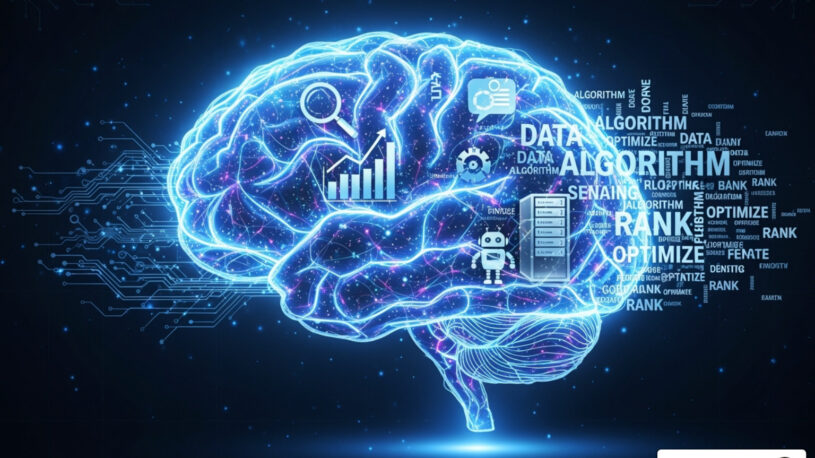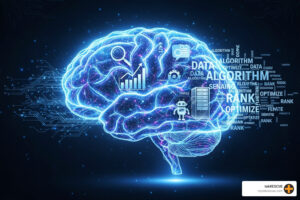

How Businesses Can Stay Ahead with Austin IT Automation & AI
Automation powered by AI is reshaping industries, offering significant advantages along with some challenges. By leveraging Austin IT automation, businesses can streamline processes, reduce costs, and improve overall efficiency.
Advantages
- Efficiency Gains: Automating repetitive tasks enhances productivity.
- Cost Savings: Reduces operational costs in the long run.
- Enhanced Decision-Making: AI analyzes data for informed strategic planning.
Challenges
- High Initial Costs: Implementing AI technologies requires substantial investment.
- Data Privacy Concerns: Protecting sensitive information is critical.
- Workforce Adaptation: Employees must adapt to new roles and technologies.
Understanding both the benefits and obstacles of AI & IT automation is crucial for maintaining your competitive edge. Embracing these technologies fosters innovation while ensuring that organizations remain agile in their respective markets, especially when supported by expert IT consulting in Austin TX.
Understanding AI and IT Automation
Artificial Intelligence (AI) refers to the capability of a machine to imitate intelligent human behavior. This includes various technologies such as machine learning, natural language processing, and robotics.
On the other hand, Business Process Automation (BPA) involves automating repetitive tasks within business operations to increase efficiency and reduce human error.
Distinguishing Between Traditional and AI-Driven Automation Approaches
There are two main approaches to automation: traditional automation and AI-driven automation.
- Traditional Automation: This approach relies on predefined rules and scripts. It often requires significant manual input to set up processes and is commonly found in legacy systems. However, it has limitations when it comes to adaptability.
- AI-Driven Automation: Unlike traditional automation, this approach utilizes advanced algorithms that learn from data. It has the ability to adapt to changes in real-time and make decisions based on patterns rather than rigid rules.
Benefits for Businesses
Implementing AI and IT automation offers numerous advantages:
- Efficiency Gains: Streamlined processes reduce the time spent on routine tasks.
- Cost Savings: Decreased labor costs and minimized errors lead to significant financial benefits.
- Enhanced Decision-Making: AI analyzes vast amounts of data quickly, providing actionable insights that inform strategic planning.
The Role of Human-Machine Synergy in Workplaces
Human-machine collaboration is transforming modern workplaces. This partnership blends intuition with the precision of technology, enhancing innovation and productivity.
Aspects of Human-Machine Collaboration
- Enhanced Problem-Solving: Machines excel at processing vast amounts of data rapidly. Humans provide the creativity and emotional intelligence necessary to interpret findings and make strategic decisions.
- Increased Efficiency: Automation tools handle repetitive tasks, allowing employees to focus on complex projects requiring critical thinking and innovation.
Case Studies in Human-Machine Partnerships
- Customer Service: Companies like Drift utilize AI chatbots to manage routine inquiries while human agents address more nuanced customer needs. This approach improves response times and customer satisfaction.
- Manufacturing: General Electric employs predictive maintenance systems that analyze machine performance data. Engineers use these insights to preemptively address issues, reducing downtime and optimizing production.
The merging of human insight with technological advancements not only drives productivity but also fosters a culture of continuous improvement within organizations.
With the right synergy, businesses use the full potential of their workforce and machine efficiency, leading to groundbreaking innovations.
Continuous Learning and Upskilling for Automation Success
The integration of AI and automation technologies necessitates that employees adapt their skill sets to remain competitive. Embracing lifelong learning helps individuals stay relevant while enhancing organizational efficiency.
Here are key training programs and certifications to consider:
- LinkedIn Learning: Offers courses in AI fundamentals, data analysis, and automation strategies.
- Coursera: Partners with top universities to provide comprehensive programs in machine learning, AI applications, and digital transformation.
Investing in workforce training for automation not only equips employees with essential skills but also fosters a culture of innovation. This proactive approach empowers teams to embrace technology confidently, driving both personal growth and organizational success.
Strategies for Implementing AI Automation Effectively
Identifying potential areas for automation within your organization is crucial for success. Consider the following steps:
- Assess Current Processes: Analyze workflows to pinpoint repetitive tasks that consume time and resources.
- Evaluate Impact: Focus on areas where automation can lead to significant efficiency gains, cost reductions, or improved service delivery.
- Engage Stakeholders: Collaborate with team members from various departments to gather insights on pain points and opportunities for automation.
Selecting suitable AI tools is equally important. Here are notable options:
- Salesforce Einstein: This AI-powered CRM enhances customer interactions by providing predictive analytics and personalized recommendations.
- UiPath: Known for its robust robotic process automation (RPA) capabilities, UiPath streamlines repetitive tasks across various business functions, allowing employees to focus on higher-value activities.
Implementing AI-centric strategies requires careful planning and execution. Aligning your chosen automation tools with organizational goals ensures a smoother integration process. Continuous evaluation will help in adapting these strategies as technology and business needs evolve, fostering a culture of innovation and efficiency.
Future Trends in AI and Automation to Watch Out For
Emerging trends in AI and automation are reshaping business landscapes. Hyperautomation is at the forefront, combining multiple technologies such as:
- Artificial Intelligence (AI)
- Machine Learning (ML)
- Robotic Process Automation (RPA)
This integration enables organizations to automate complex processes, enhancing efficiency and reducing human error.
Intelligent decision-making will become increasingly prevalent. AI systems analyze vast amounts of data, uncovering insights that drive strategic choices. As these technologies evolve, businesses can expect:
- Increased operational agility
- Improved resource allocation
- Enhanced customer experiences
Embracing Change in the Workplace Through AI & IT Automation
Embracing workplace change via AI & IT automation is essential for growth and innovation. Companies must foster a culture that encourages:
- Openness to Change: Embrace new technologies and processes.
- Innovation Mindset: Encourage experimentation and creative problem-solving.
- Continuous Feedback: Actively seek insights from colleagues and AI systems.
By valuing adaptability and resilience, organizations can leverage AI tools effectively, transforming challenges into opportunities. This proactive approach not only enhances efficiency but also empowers employees to thrive, ensuring long-term success.
Frequently Asked Questions About IT Automation
What are the advantages of AI and IT automation for businesses?
AI and IT automation offer numerous advantages for businesses, including efficiency gains, cost savings, and enhanced decision-making capabilities. By automating repetitive tasks, organizations can streamline processes and focus on strategic initiatives.
How does AI-driven automation differ from traditional automation approaches?
AI-driven automation leverages artificial intelligence to improve decision-making and adapt to changing conditions, whereas traditional automation typically relies on predefined rules and scripts. This distinction allows AI-driven solutions to be more flexible and responsive to complex business environments.
What role does human-machine synergy play in workplace innovation?
Human-machine synergy is essential for workplace innovation as it combines human intuition with technological advancements. This collaboration can lead to more effective problem-solving and creative solutions, as evidenced by case studies showcasing successful partnerships between humans and machines.
Why is continuous learning important in automated environments?
Continuous learning is crucial in automated environments because it enables employees to adapt to new technologies and processes. Lifelong learning helps workers stay relevant, enhances their skills, and prepares them for the evolving demands of the job market.
What strategies can organizations implement for effective AI automation?
Organizations can implement effective AI automation strategies by identifying potential areas for automation within their operations and selecting suitable AI tools tailored to their needs, such as Salesforce Einstein or UiPath. This targeted approach ensures that the integration of automation aligns with business goals, much like partnering with an Austin managed IT provider to ensure infrastructure stability.
What future trends in AI and automation should businesses be aware of?
Businesses should keep an eye on emerging trends such as hyperautomation, which integrates multiple technologies like AI, machine learning (ML), and robotic process automation (RPA). These trends promise to enhance operational efficiency and drive intelligent decision-making across various sectors, particularly when combined with robust managed services in Austin and proactive Austin cybersecurity strategies.
Table of Contents








